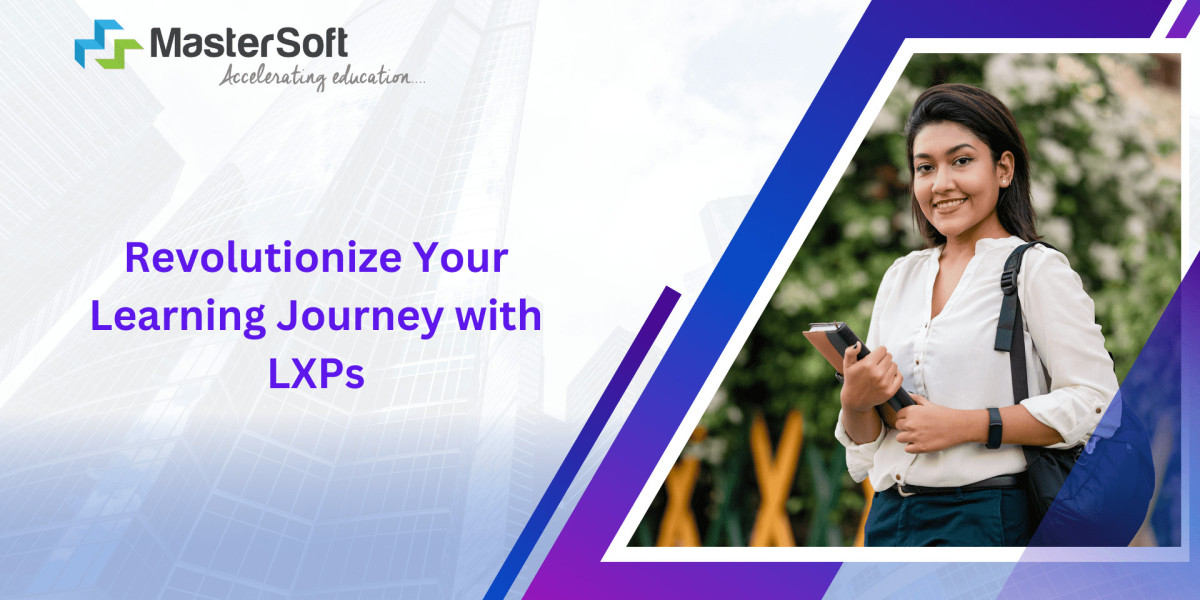In today's rapidly changing educational and corporate landscapes, the demand for personalized, flexible, and engaging learning experiences is growing. Traditional Learning Management Systems (LMS) often focus on top-down, curriculum-driven learning models. However, a new approach, known as Learning Experience Platforms LXP has emerged to address the evolving needs of learners and organizations by providing a more learner-centric experience.
In this blog, we will explore what an LXP is, how it differs from LMS, and why it’s becoming the go-to solution for modern learning environments.
1. What is a Learning Experience Platform (LXP)?
A Learning Experience Platform (LXP) is a digital learning platform designed to provide personalized and engaging learning experiences. Unlike traditional LMS platforms that focus on administrative tasks like course management, an LXP prioritizes the learner’s experience by offering a more intuitive, interactive, and social learning environment.
An LXP empowers learners to take control of their own learning paths by offering a wide variety of content such as videos, podcasts, articles, and interactive modules. It is built to accommodate different learning styles and preferences, promoting continuous and self-directed learning.
2. Key Features of an LXP
a. Personalized Learning Paths
One of the key advantages of an LXP is its ability to personalize learning. The platform uses algorithms and artificial intelligence (AI) to suggest courses, resources, and content based on a learner's past behavior, preferences, and goals. This ensures that learners are engaged with content that is relevant and meaningful to them.
b. User-Generated Content
Unlike traditional systems where content is usually controlled by the organization, an LXP allows users to contribute their own content. This could be in the form of peer discussions, blogs, or shared resources, making the learning experience richer and more collaborative.
c. Social Learning Features
LXPs promote social learning by allowing learners to interact with each other, share knowledge, and provide feedback. Features such as discussion forums, peer reviews, and collaborative projects foster a sense of community, making learning a shared experience.
d. Multi-Format Content
An LXP supports a variety of content formats, including videos, podcasts, infographics, and interactive simulations. Learners can choose the type of content that best suits their learning style, allowing for a more engaging experience.
e. AI-Powered Recommendations
The AI-driven nature of an LXP means that the platform continually learns from user behavior. It can recommend content based on the learner’s interactions, such as the courses they've completed or the skills they want to acquire, enhancing the relevance of the learning materials.
f. Integration with External Resources
LXPs often integrate with external content providers like LinkedIn Learning, Coursera, or Udemy, giving learners access to a vast library of resources. This expands the learning possibilities and offers learners a more diverse range of options.
g. Data-Driven Insights and Analytics
Administrators and learners benefit from robust analytics and reporting tools that track progress, engagement, and performance. This data helps organizations measure the effectiveness of learning programs and allows learners to reflect on their own development.
3. How is an LXP Different from an LMS?
While both LMS and LXP aim to facilitate learning, they differ in several key ways:
a. Learning-Centric vs. Administration-Centric
An LMS is primarily designed to manage, deliver, and track courses in a structured, curriculum-driven environment. It is often instructor-led and focuses on course delivery, compliance, and certifications. On the other hand, an LXP focuses on providing a personalized, learner-driven experience. Content is often curated based on individual needs rather than delivered in a top-down manner.
b. Content Flexibility
In an LMS, content is usually static, consisting of pre-designed courses or modules. An LXP, however, offers a more dynamic content library, pulling resources from both internal and external sources and allowing users to contribute their own content.
c. Engagement and Interaction
LXPs emphasize engagement through gamification, social learning, and personalized recommendations, whereas LMS platforms tend to be more transactional, focusing on course completion and compliance tracking.
4. The Benefits of Using an LXP
a. Increased Learner Engagement
The personalized approach of an LXP ensures that learners engage with content that is relevant to them, increasing motivation and retention. Social features and user-generated content also contribute to creating an active, learning-driven community.
b. Continuous and Lifelong Learning
Unlike traditional LMS platforms that deliver structured courses, LXPs are designed for continuous learning. Learners are encouraged to explore a variety of content and pursue learning at their own pace, supporting both professional development and personal growth.
c. Adaptability to Learning Preferences
Since LXPs support a wide range of content formats, learners can choose the type of material that suits them best, be it a video, article, or interactive quiz. This adaptability improves the overall learning experience by catering to individual preferences.
d. Self-Directed Learning
Learners using an LXP have greater control over their learning paths. They can select courses based on personal goals and interests, rather than being confined to a prescribed curriculum. This autonomy fosters intrinsic motivation and ownership of








